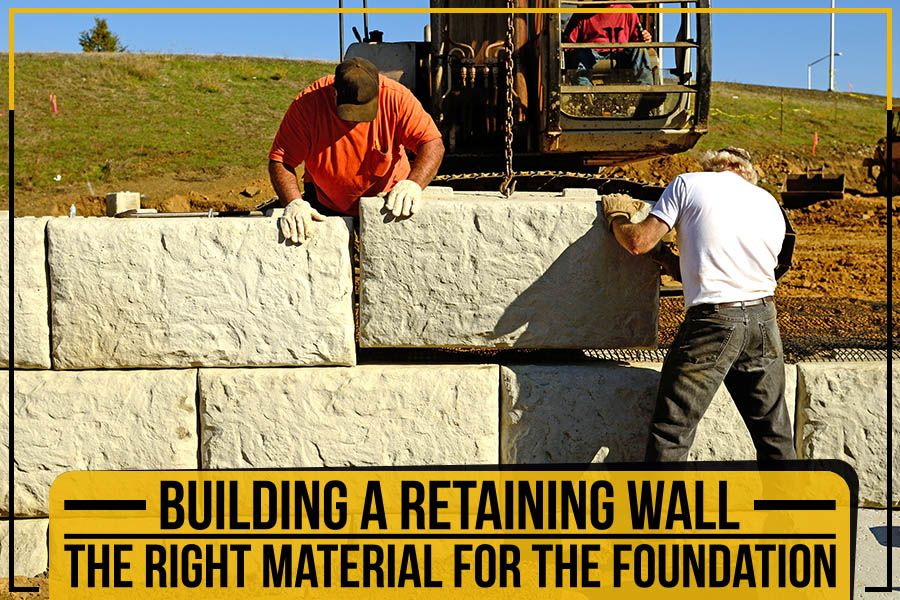
When building a retaining wall, the foundation is one of the essential parts. The wrong material can lead to your wall collapsing, so it’s necessary to choose the right one. You can use several materials for a retaining wall foundation, but we at Straight Edge Contractors LLC will highlight the two main material choices here.
Why is a Retaining Wall Necessary?
Retaining walls are usually built to protect an area from soil erosion, runoff, or landslides. They also help prevent flooding, which is often one of the most common reasons homeowners invest in retaining walls.
Types of Retaining Walls:
Before choosing a retaining wall foundation, you need to consider what type of wall you want. There are different retaining walls, and the one that will work for your property needs to be selected carefully. Some examples of common types include:
Gravity Retaining Wall: This type of wall relies on the natural force of gravity to keep it in place. It’s usually made from a stack of large, flat stones and is one of the most common types of retaining walls.
Cantilevered Retaining Wall: This type of wall is anchored into the ground at only one end. The other end hangs over like a ledge, which gives it its name.
Counterfort Retaining Wall: This type of wall uses an opposing pair of walls (known as counterforts) to hold it in place. The counterforts are typically short and stout, while the main retaining wall is longer.
Asphalt vs. Concrete Surfaces for Retainer Walls
Asphalt pavement is a preferred choice for parking lots and driveways over concrete. With regular care, it’s long-lasting and straightforward to maintain. However, the fill depth beneath an asphalt surface differs from concrete. Concrete surfaces are often topped with a deeper, more solid foundation. It makes concrete more durable and less susceptible to movement and damage from frost heave.
There is a big difference in the hardness of the two surfaces and terms of flexibility. Because the asphalt has some flex in it, placing something hefty on top of it without a solid foundation might become an issue.
The weight of the wall could cause the asphalt to crack or settle, which would harm the wall over time.
In contrast, a concrete surface is much more rigid and can handle more weight. If you have a retaining wall that will be very heavy, the best choice is to use a concrete foundation.
Choosing the Right Material:
When building a retaining wall, the type of material used for the foundation is critical to the project’s overall success. If you’re unsure which material is suitable for your situation, consult with a professional before getting started. They can assist you in choosing the best foundation for your specific needs and ensure that your retaining wall will be safe and durable.
Straight Edge Contractor LLC offers a variety of solutions for your construction projects in Las Cruces. You can reach out to our team to help you choose the suitable material for your next project. Schedule your free estimate!



